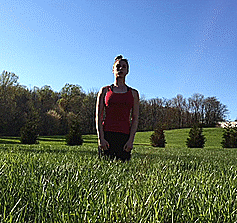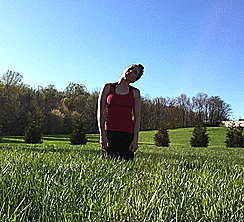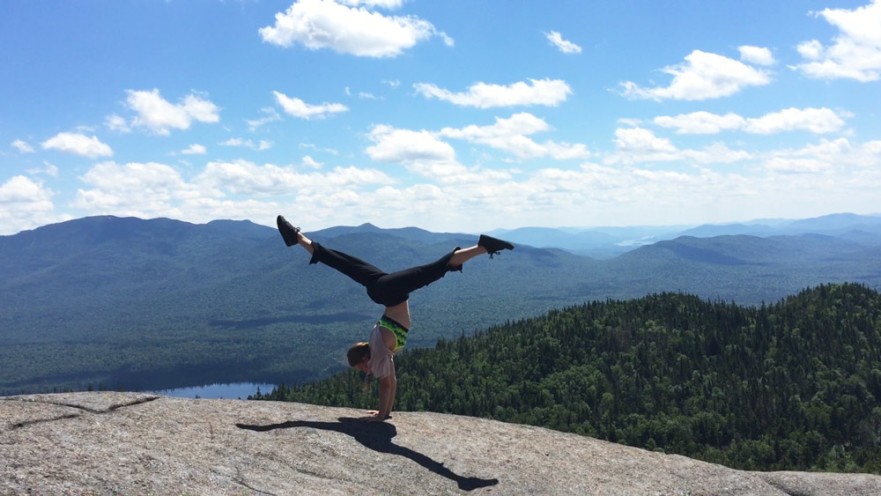You want flexibility? You’re gunna need strength to get you there safely!
When we think about splits, we normally don’t think about which muscles need to be engaged and which relaxed, how the legs need to rotate or extend, or the amount of weight that is placed on wrists. We just think abut pushing down further; but please don’t do this, as it can cause injuries.
The secret to flexibility is being able to control each individual muscle by itself and in groups, in neutral and flexible positions. Understanding exactly which muscles need to be relaxed and which engaged is the tricky part. But when you start drawing your attention towards your muscles, you’ll better understand which muscles do what.
It’s one things to have splits on the ground with the help of a flat surface and body weight, but what about just using your muscles to lift, extend, or kick your legs into a split? For any stretch, without the help of gravity or outside force, you need serious strength and muscle control!
Flexibility isn’t just about stretching, it’s about building strength and muscle memory in new ranges of motion.
How do we build strength in new ranges of motion?
Get to know you’re muscles like they are your best friend!
- Focus on controlling your muscles while in a “comfortable” static stretch or neutral position, and while doing dynamic stretches.
- It’s about relaxing the muscles we’re stretching, and strengthening the supporting muscles that allow the muscle to relax.
- Focus on flexing/holding, extending, rotating, pulsating, and relaxing your muscles by themselves and in groups. Then try the same thing with variations, standing up, laying down, kneeling, in a split, in a bridge, etc. The more control you have over your muscles in all positions, the easier your current range of motion will become, and the more flexibility and strength gains you’ll have made.
- Never force yourself further into a stretch. Stay in a position that is “comfortable” and work on muscle control in the range of motion you already have. I say “comfortable” because stretching is a “hurt so good feeling” or an intense amount of good. If it’s a “hurts so bad” or sharp pain, take a step back and take the pressure off.
- The activities below are all in basic neutral positions and will help you use your mind on specific muscle groups, and better yet infused with deep synchronized breaths and balance.
- This interactive muscle guide is my favorite website for figuring out which muscle is which. Although I prefer speaking in basic muscle language, so everyone can understand me.
The top things to focus on while stretching.
- Breath
- Form & Posture
- Muscle Engagement and Relaxation
More on breath, form and posture coming out in the next couple of weeks.
What to Work On
To have strength and flexibility in the air effortlessly, you’ll need to work on a few more details.
- Mentally controlling each muscle’s ability to extend, engage and or relax individually, and in groups. You can learn to control your muscles by engaging or squeezing your muscles, and relaxing rhythmically; in a neutral position and/or in a stretched position.
- Dynamic Stretching Routines
- Dynamic Stretching Routines with Resistance
- Using resistance bands like these.
- Opposite Force: Having someone push against you; Side Split Example: laying on your back you try to lift your leg while someone tries to push it down; from all angles, 180 degrees (laying down), 130 degrees, 90 degrees (legs straight up) and as far as you can go. Then try the opposite, you try to lower your leg while someone is pushing it up.
If you want to build flexible strength, you have got to learn how to use your muscles properly with good form, in all movements and positions, and while you breath steadily.
Basic Muscle Language
- Glutes = Butt Muscles
- Hip Flexor = Front of Hip Muscle
- Obliques = Side Abs
- Quads = Front of Thigh
- Hamstring = Back of Thigh
Flexible Strength Routine
Complete the exercises below in place of your consistent dynamic stretch routines, and repeat as many times as necessary.
You can do the following exercises in any of these positions:
- Sitting in a sturdy chair, make sure you’re sitting up tall.
- Standing up tall.
- Kneeling.
- Laying Down.
There are hundreds of different positions to try and control your muscles in, this is a basic routine to get you started and inspired to build upon. Do what feels good, and always check your form and posture.
1.1 Neck & Shoulders

10x
- Take a deep 3 second breath and contract your neck muscles upward
- Exhale, keeping your neck high, relax shoulders, down and slightly back.
- Visualize a string attached to the back of your head, that someone is lifting up.
1.2 Neck & Shoulders – ear to shoulder

10x each side
- Take a deep 3 second breath and pull your right ear to your right shoulder.
- Exhale relax left shoulder down.


Comments 1
Thank you Amanda 😊